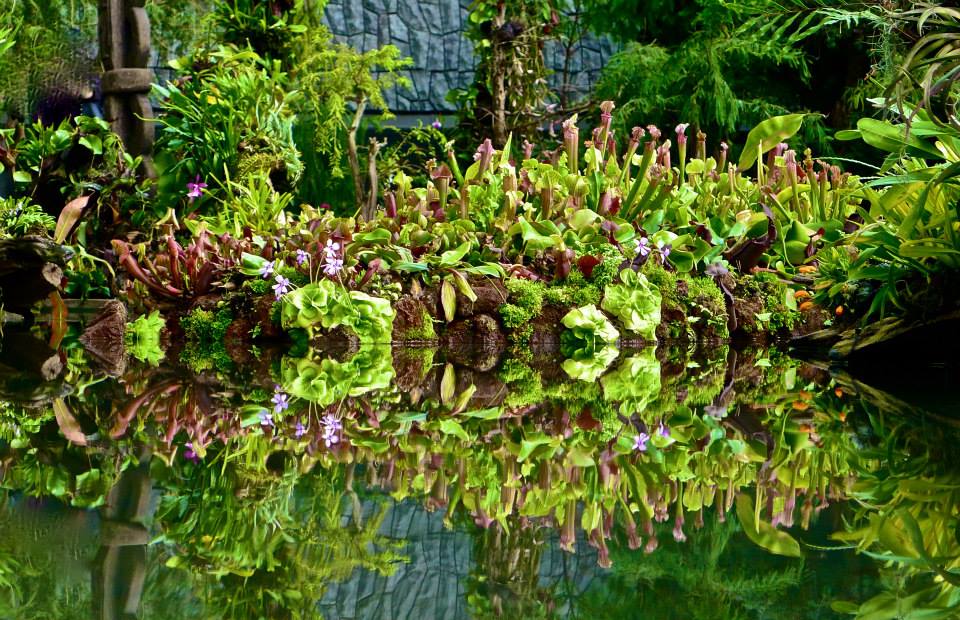Biodiversity Record: Sunda Pangolin at the Botanic Gardens
March 2, 2023

Photo: ‘Reflections of a Garden City’ by Joshua Lim Chong Rui from SRN’s SG Photobank
Calls for biodiversity conservation have entered the limelight in the past decade, with strong public involvement in discussions about protecting biodiversity in the Central Catchment Reserve and Dover Forest. Amidst concerns that land scarcity and housing needs will take precedence over biodiversity protection, it is heartening for many nature enthusiasts that Singapore remains a sanctuary for some rare species of flora and fauna.
In ‘Rare animals of 2022: First record of a giant click beetle in S’pore, another green cockroach’ (The Straits Times, December 2022) and the mentioned journal publication, ‘Biodiversity Record: Sunda Pangolin at the Botanic Gardens’ (Nature in Singapore, 2022), Dr Gretchen Coffman (NUS Geography), Mr Lewis Kwek Boon Leong (NUS Geography), and Mr Muhammad Khairul (NUS Geography) highlight their sightings of rare critters.
The researchers contributed the first documented record of a lone Sunda pangolin in the Singapore Botanic Gardens. In January 2022, the unsuspecting adult pangolin was captured on a trail camera near the artificially restored forested Keppel Discovery Wetlands and man-made Eco Lake during the researchers’ longitudinal wetland restoration monitoring study programme. This habitat is mostly comprised of flora and fauna of the tree species Alstonia pneumatophora (Marsh Pulai or Pulai Basong), Buchanania arborescens (more commonly known as the gooseberry tree or sparrow’s mango), and Triadica cochinchinensis (the mountain tallow tree), with an average soil moisture of approximately 57% volumetric water content. This corresponds to international data about Sunda pangolins making their habitats in a variety of places, including primary and secondary tropical forests and peat swamp forests.
According to Dr Coffman, the sighting affirms NUS’ research into the long-term success of restored wetlands in the Singapore Botanic Gardens for wildlife, especially because the most recent report of a pangolin before this was of a dead example at Sembawang Park.
The Sunda pangolin (Manis javanica) is regarded as ‘critically endangered’ globally according to the International Union for Conservation of Nature (IUCN), with only approximately 1,046 of the mammals left in Singapore. In our highly urbanised landscape, the major threat to Sunda pangolins seems to be roadkill incidents and habitat reduction, rather than poaching, due to strict regulations enforced since the late 1990s to curb wildlife trafficking.
As such, conservation efforts have been made to rescue and rehabilitate pangolins found in urban areas where they are more vulnerable. In 2018, the Singapore Pangolin Working Group developed the National Conservation Strategy and Action Plan. The plan was jointly written by Mandai Wildlife Group and the National Parks Board, in conjunction with the IUCN Species Survival Commission and Asian Species Action Partnership. The aim of this multi-stakeholder collaboration is to pool resources and improve the effectiveness of conservation efforts targeting pangolins in Singapore.
Dr Coffman spoke encouragingly of the breakthrough with the Straits Times: “As the National Parks Board strives to transform Singapore into a ‘City in Nature’, this Sunda pangolin sighting gives us hope that people and wildlife can coexist together.”
Read the Straits Times article here, and the Nature in Singapore journal article here.
